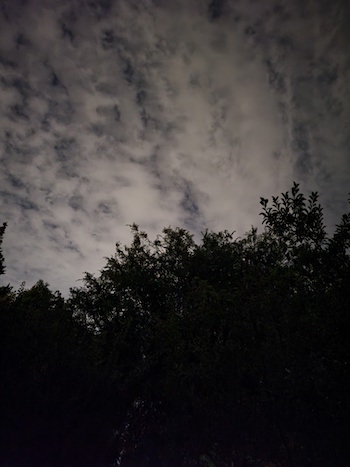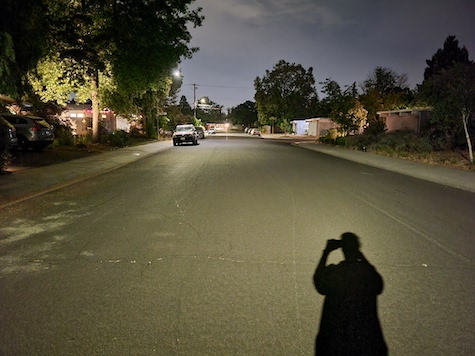Tonight (Sunday night) there will be a new moon. But for many of you, if you go outside, it won’t be dark. In 2016 researchers found that 88% of Europeans and half of Americans essentially experience perpetual twilight, and over 99% of US and European populations see some sort of skyglow.
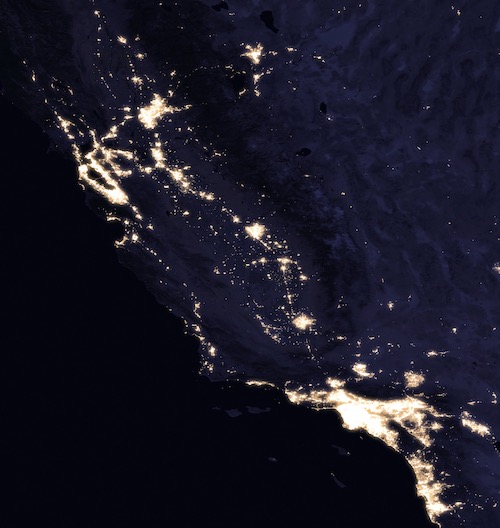
Population centers in California are suffused with artificial light at night. You can see the Bay Area, Sacramento, and the greater Los Angeles area in this satellite image. Source: NASA (2016)
According to UCLA Professor Travis Longcore, who has been studying the effects of light pollution for decades, even a “natural” space like Griffith Park in Los Angeles is affected. “The park never really experiences anything dimmer than twice as bright as the full moon … even though it is 4500 acres of open space.”
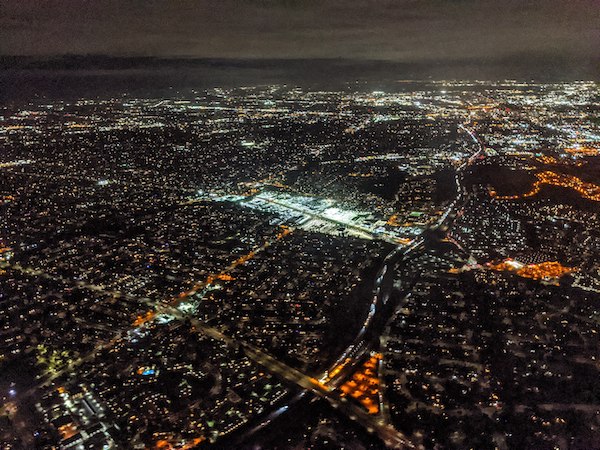
San Jose and the Capitol Auto Mall at night. Source: Wikimedia (2021)
Where is the light coming from? A study of Tucson found that streetlights were only up to 20% of the problem with the rest attributed to businesses, homes, an airport, advertising signs, sports complexes, and vehicle traffic. There is no single dominant source.
Dr. John Barentine, a light pollution consultant who has helped run several “Dark Sky” organizations, believes that the availability of inexpensive light in the form of LEDs has exacerbated the problem, with more lights illuminating more area over longer periods of time. “It really comes down to an overuse relative to what our needs are. That overuse is a result of … a lack of awareness. A lot of people don’t think that light at night can be a bad thing. They think of it as a social good… and they don’t give a lot of thought to what other effects it might be having on the nighttime environment.”
There are many ways in which artificial light at night distorts the natural environment. Many animals feel safer in the dark. Lit areas and especially lit corridors can impact their ability to travel. Scientists have seen over the years that fish won’t go past a low lit bridge, that bats won’t fly over a lit road, that mountain lions shy away from lit regions. The light distorts their natural behavior and can impact their habitat and range.
In contrast, some animals are attracted to light, and not just moths. Migratory birds can be distracted by lit buildings, and as they circle the buildings they become vulnerable to collisions and fatigue. The haunting 911 memorial in New York City distracted an average of 100,000 birds each year on September 11 until volunteers began turning off the lights for 20 minute intervals as needed so the birds could escape.
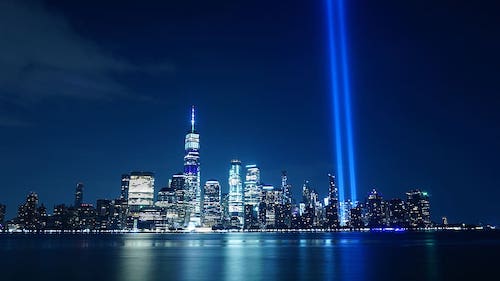
The 911 memorial in New York City diverted and killed many birds on September 11 during their fall migration until volunteers stepped up to turn off the lights when birds swarmed to them. Source: pxfuel
Researchers have shown that many young turtle hatchlings and sea birds that would use the stars and moon to navigate out to the ocean will never get there if there is too much light distraction. If you are in Hawaii for vacation, check to see how the resort is lit up at night. The Grand Wailea in Maui was sued a few years ago for the impact of its lights on the endangered Hawaiian petrel.
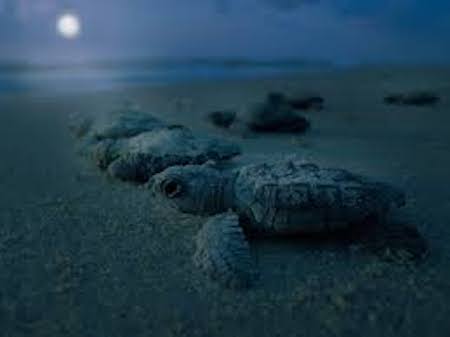
Turtle hatchlings use the moon and stars to navigate to the ocean, and so can easily be diverted by artificial light at night. Source: Charlotte County
Artificial light at night can interfere with many types of behavior, including pollination, breeding, and foraging. The negative impact of such light extends beyond animals. Some plants have evolved to rely on dark nights. Longcore gives the example of winter soybeans, which set seed and turn brown as winter comes. But if they are exposed to light, winter never comes and they remain green.
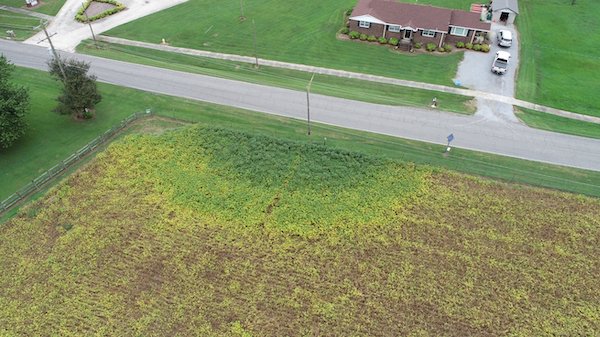
Winter soybeans do not go to seed when exposed to artificial light at night, here shown in a concentric circle around a light post. Source: Dwayne Eddie McGriff on Twitter
As Longcore puts it, our wastefulness with light means that we have lost the lunar cycles in many urban areas. We have lost the signal of day length over the course of seasons. We have lost darkness as a refuge for species. The range of impacts is so great that Barentine writes that artificial light at night “is one of the most pressing and imminent threats to global biodiversity.”
Fortunately, an enormous amount of research is underway to quantify some of these effects and develop evidence-based standards and recommendations for lighting. If we are smarter about how we use lighting we can reap the benefits without the negative impacts.

From left to right, this panel illustrates one way that we can optimize lighting to achieve a goal (in this case a lighted path) while reducing the impact on wildlife. Illustration by Leigha DelBusso from Longcore and Rich (2017)
We could also potentially save billions of dollars in the US alone if we eliminated the approximately one-third of our lighting that is wasted, according to the International Dark Sky Association.
If you do go outside on Sunday or Monday night and some of the light you see is from your own home, consider these options:
- Add a sensor to a light fixture, so it only comes on when needed.
- Replace a light switch with a timer switch and set it to turn off at night.
- Replace a light switch with a dimmer switch (if needed) and dim it.
- Switch to a warmer color bulb. Warmer colored bulbs are less intrusive for many (but not all) animals.
Window shades and replacement light fixtures can also help, though they may be pricier.
A bill is making its way through California’s legislature (again) to make sure we have environmentally-friendly light fixtures on government buildings, at least for new fixtures. Governor Gavin Newsom vetoed the first version but because the bill has wide bipartisan support and the sponsorship of organizations including the local Audubon societies, the sponsoring legislators (our own State Senator Josh Becker 13th District and Assemblymember Alex Lee 24th District) have reintroduced it with some changes to reduce cost and provide more exceptions. It no longer applies to replacement fixtures, unfortunately, and the list of exemptions is long. But it’s a start.
I’d love to hear in the comments if you went outside on Sunday or Monday night and looked for artificial light. What were the sources? Where was light useful and where did it seem extraneous? Have you made any changes to reduce night-time light from your home?
Notes and References
1. Night-time light also affects humans, though studies have primarily focused on indoor light. Too much night-time light, and particularly blue light, affects circadian rhythms, which can in turn affect sleep, body temperature, certain hormone levels, blood sugar, immunity, even cancer, with research on-going. For more information, see section 3 on pages 7-9 of this briefing.

Many of you will have seen a setting like this on your computer or smartphone.
Current Climate Data (June 2023)
Global impacts, US impacts, CO2 metric, Climate dashboard
Earth had its warmest June on record. The June sea surface temperature anomaly was the highest for any month on record
Comment Guidelines
I hope that your contributions will be an important part of this blog. To keep the discussion productive, please adhere to these guidelines or your comment may be edited or removed.
- Avoid disrespectful, disparaging, snide, angry, or ad hominem comments.
- Stay fact-based and refer to reputable sources.
- Stay on topic.
- In general, maintain this as a welcoming space for all readers.




